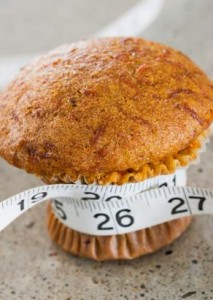The other day, a woman who looked to be about in her early 40’s approached the counter. “Are any of your muffins low-fat?” she asked. I replied, “No, but all of them are delicious. My favourite is the bran muffin. And bran is healthy!” She pursed her lips and retorted, “I only eat low-fat muffins.” She continued to eye the attractive array of muffins for a few minutes longer, and then retreated into the crowd.
Less than ten minutes later, the same woman reappeared. “Oh, I really wish you carried low-fat muffins,” she said. “I can’t find any and everything looks so good!” At this point, I contemplated taking out a Sharpie and scribbling “low-fat” on the muffin signs, just so this woman could get over herself and buy the darned muffin. (The longing in her expression was truly the definition of obvious.)
After the woman finally left, I wondered what regulations existed that would prohibit me from labeling the Bakery’s muffins as low-fat. Besides, none of our products even come with a nutrition label. Have you ever walked into a fancy bakery and seen calorie counts posted everywhere? I think not. However, I have walked into a fancy bakery and seen select goods labeled as low-fat. So who decided that?
In Canada and the United States, commercial goods with 3 grams of fat or less per serving are allowed to be labeled as “low-fat”. This has been stipulated by law. But in the case of these corner shop cafes/bakeries, have they really sent in their muffins for a professional nutritional analysis? Even if they’re, for example, substituting applesauce for some of the baking fat (i.e. vegetable oil), do they really know for sure whether there is less than 3 grams of fat per serving? I have my doubts.
I imagine there must be some kind of “low-fat label” police out there, cracking down on these sneaksters offering scrumptious, not-really-low-fat muffins. However, monitoring is only performed on companies whose products find their way into chain retailers located nationwide. So until labeling regulations are extended, the “low-fat” muffins available in your local corner shop bakery will undoubtedly continue to sell…and find their way to thighs near you.

